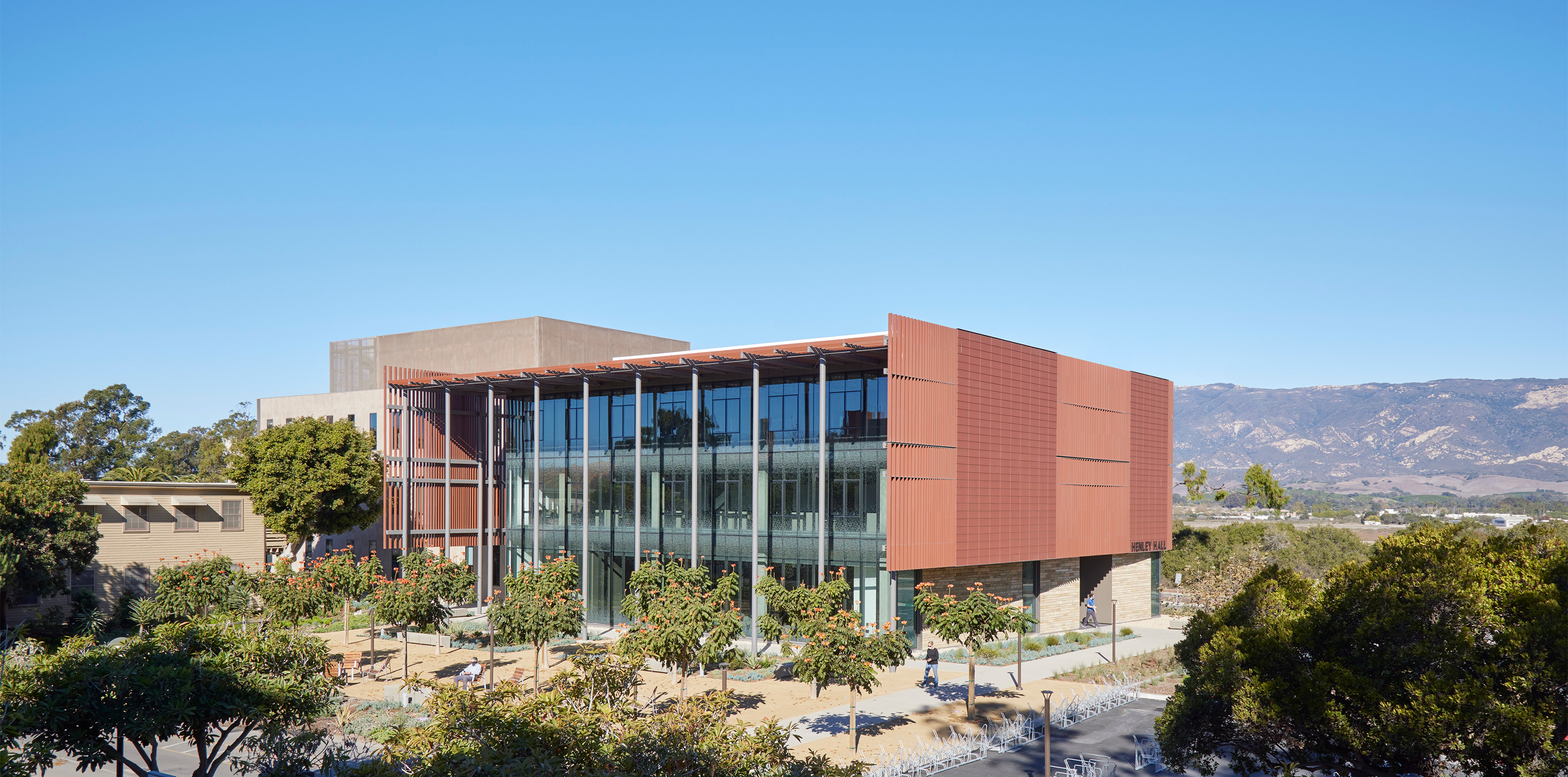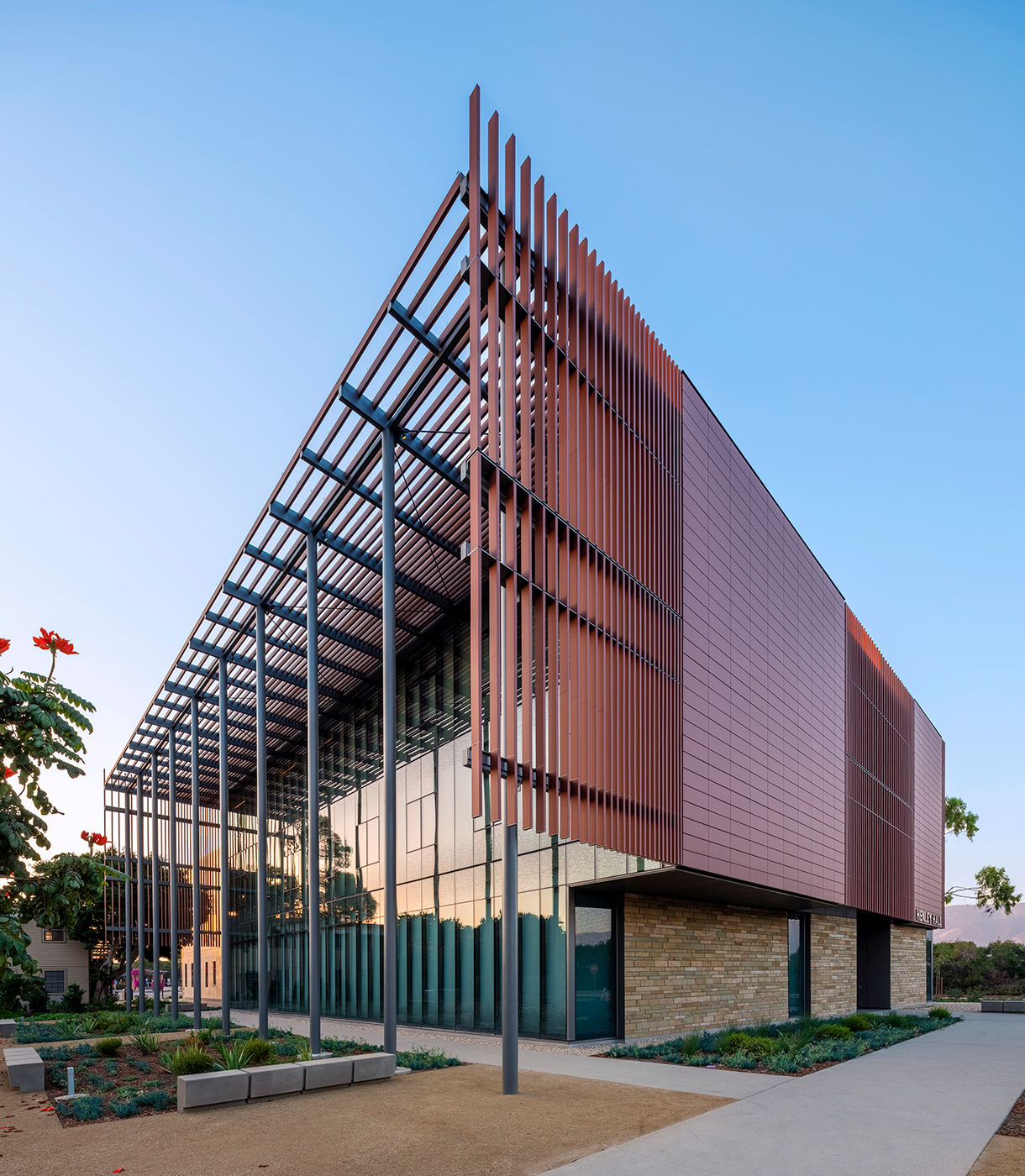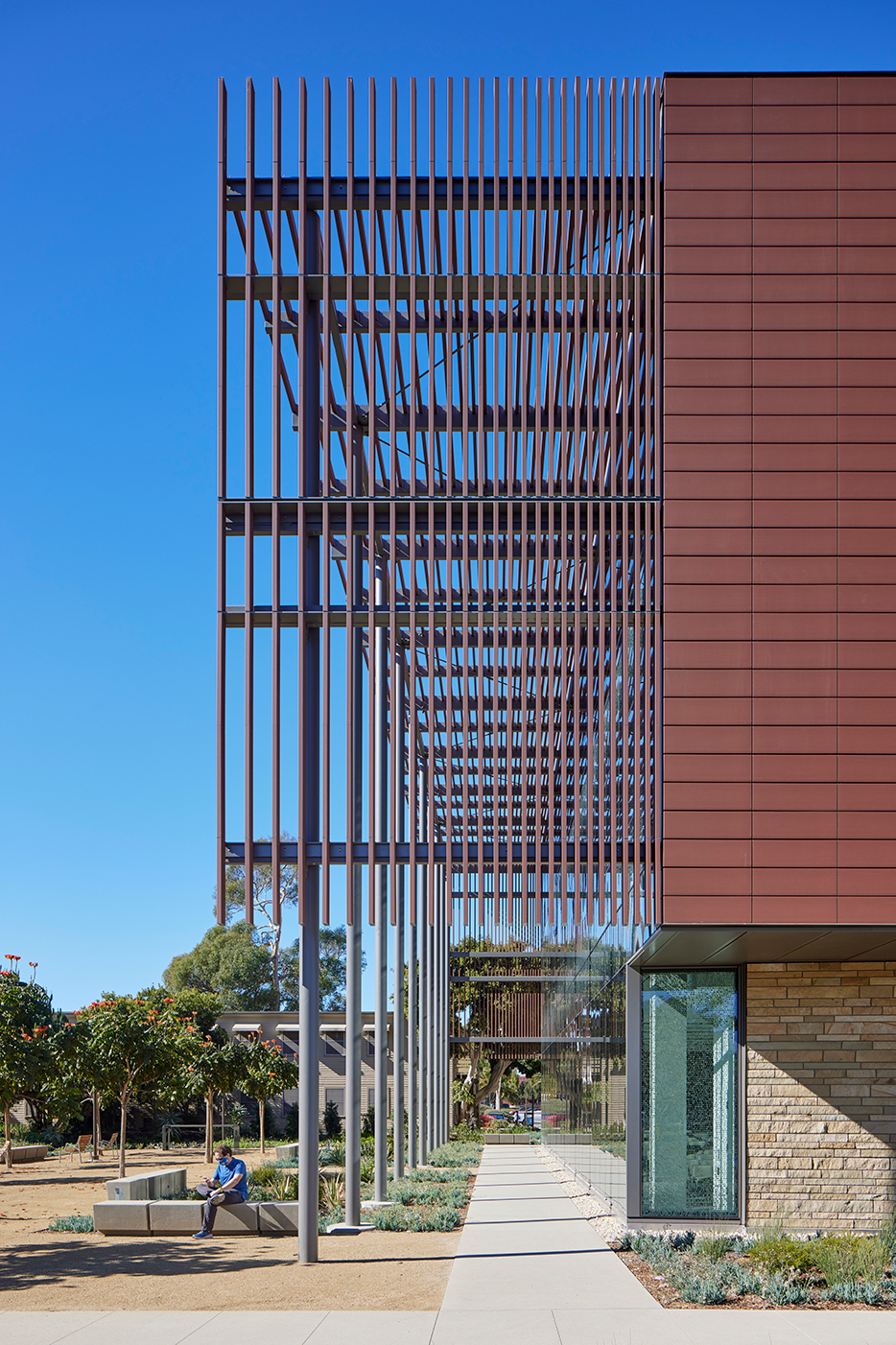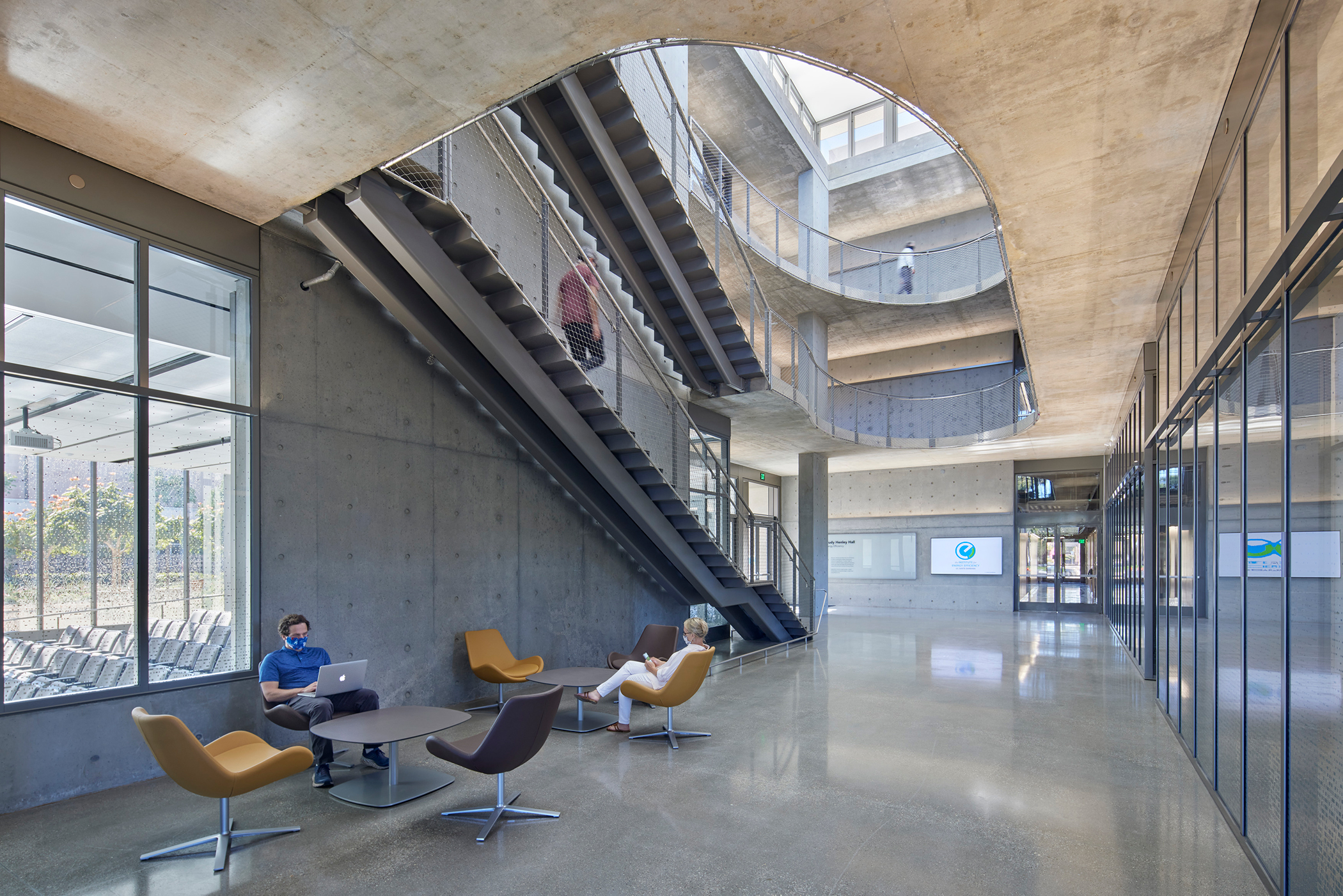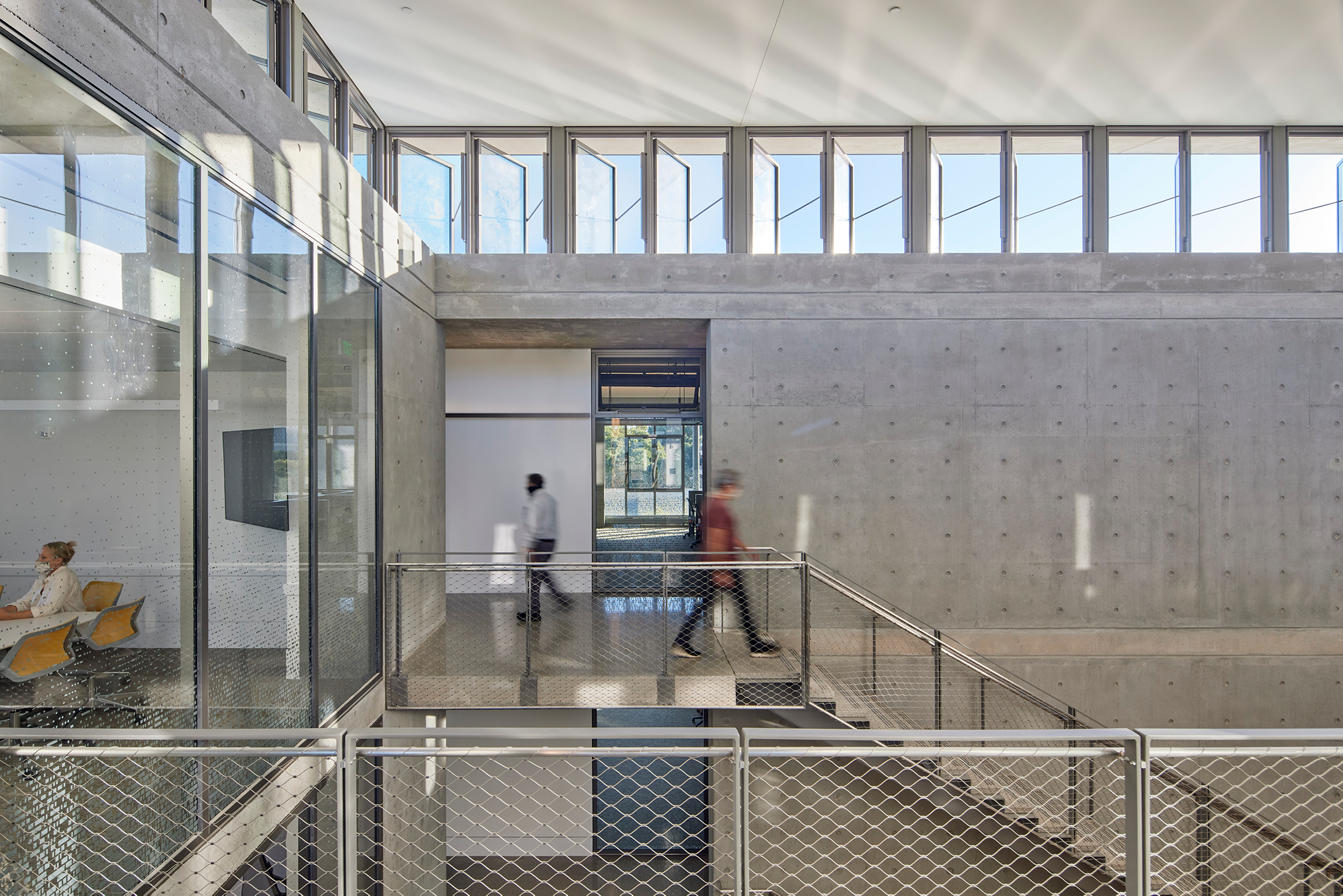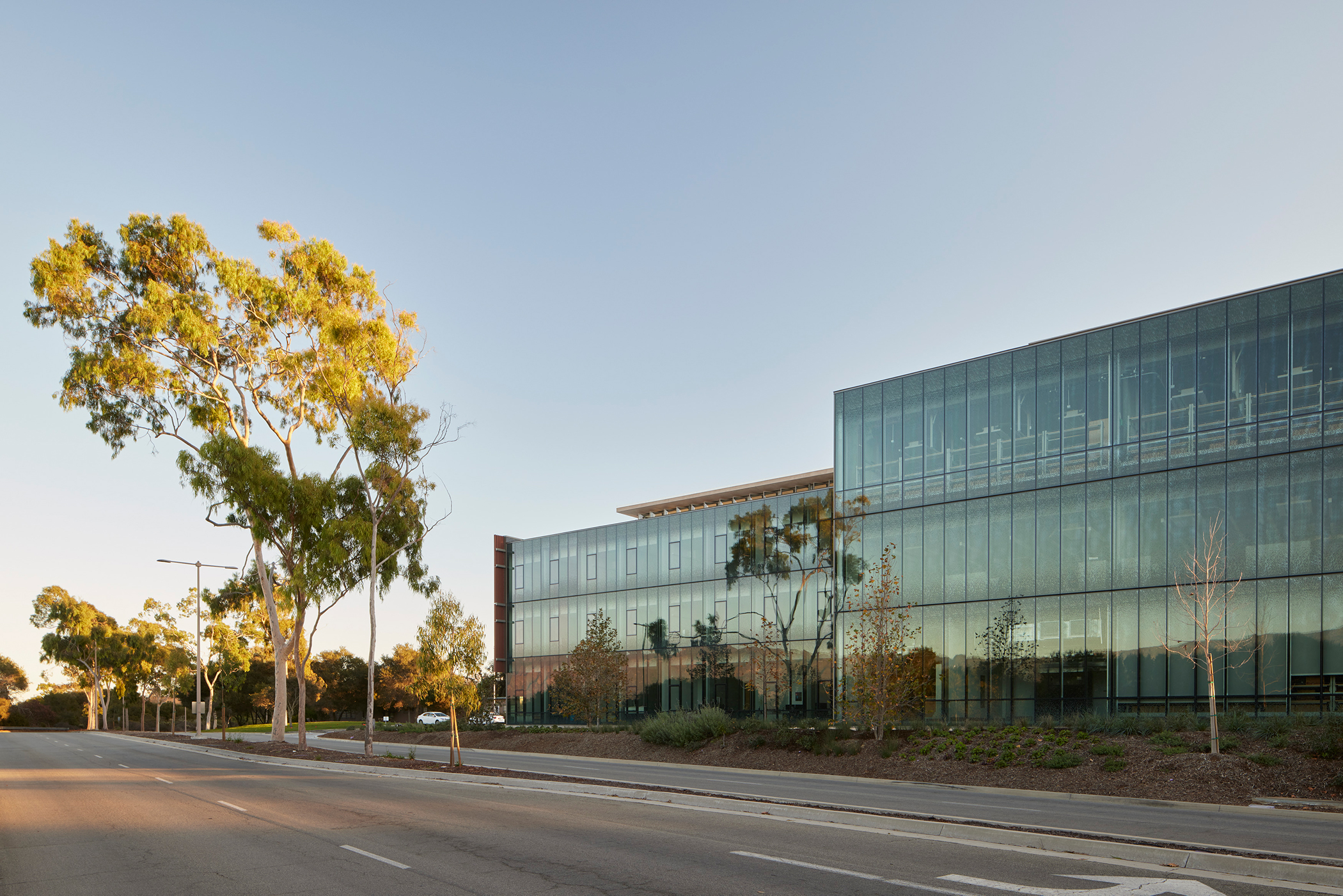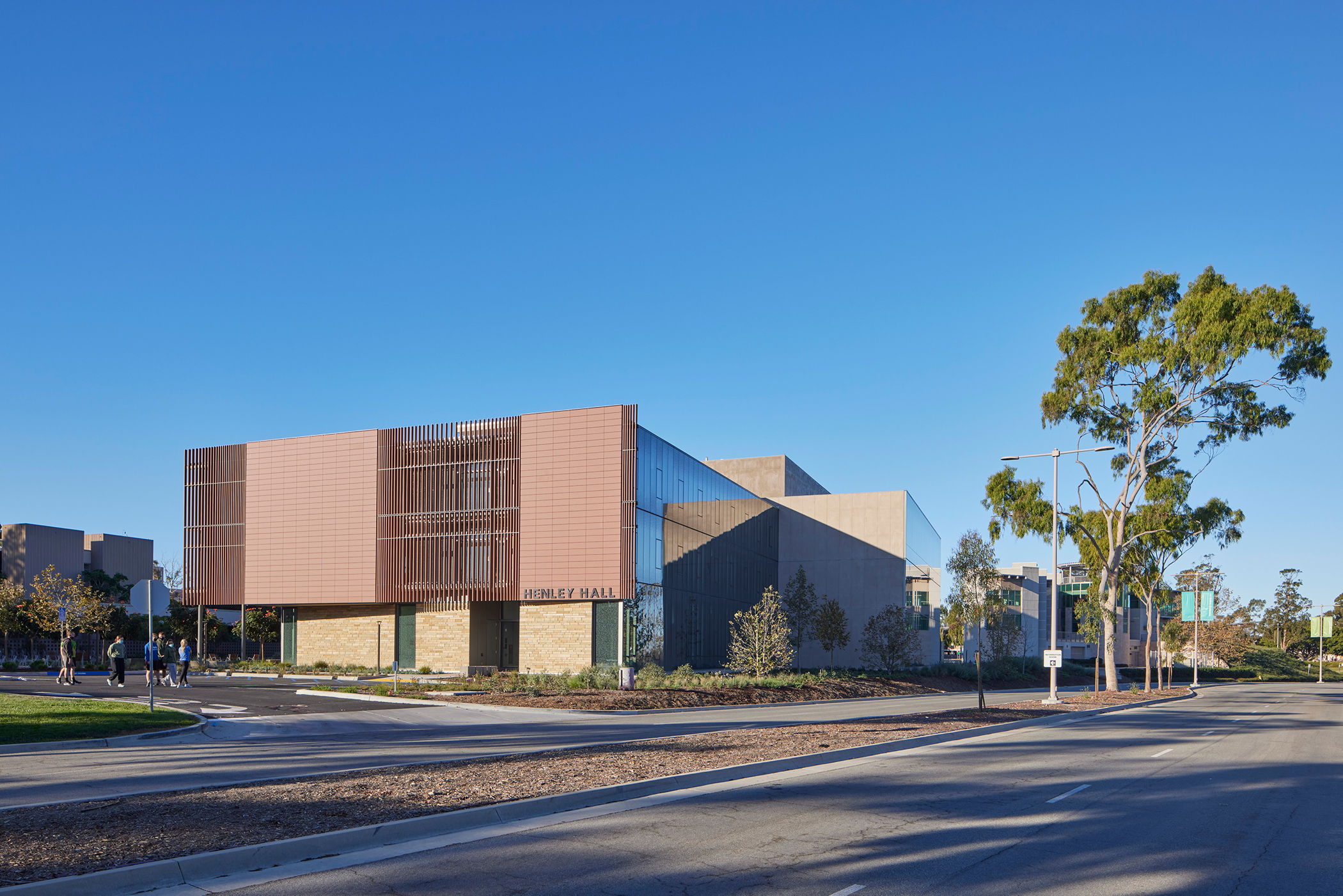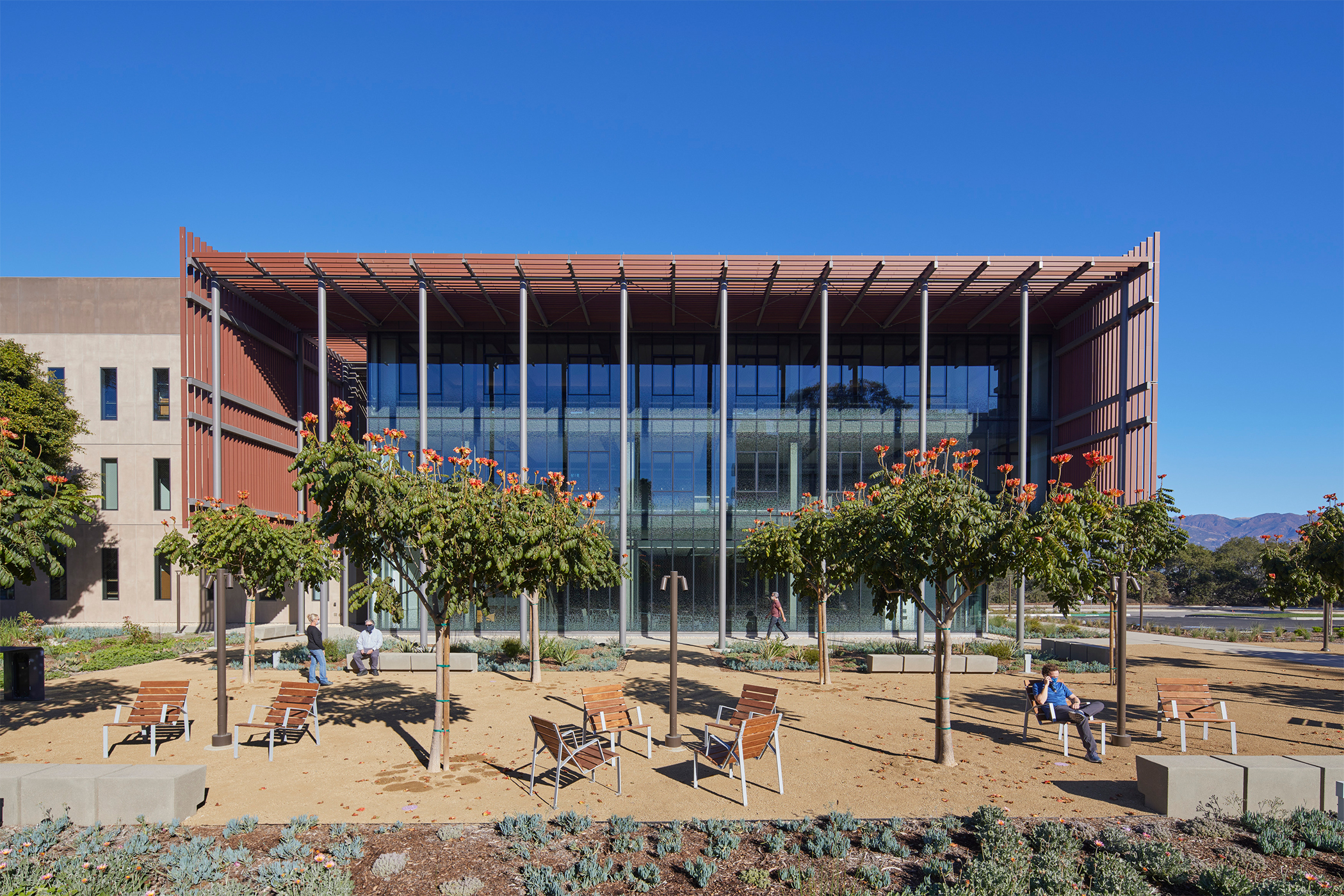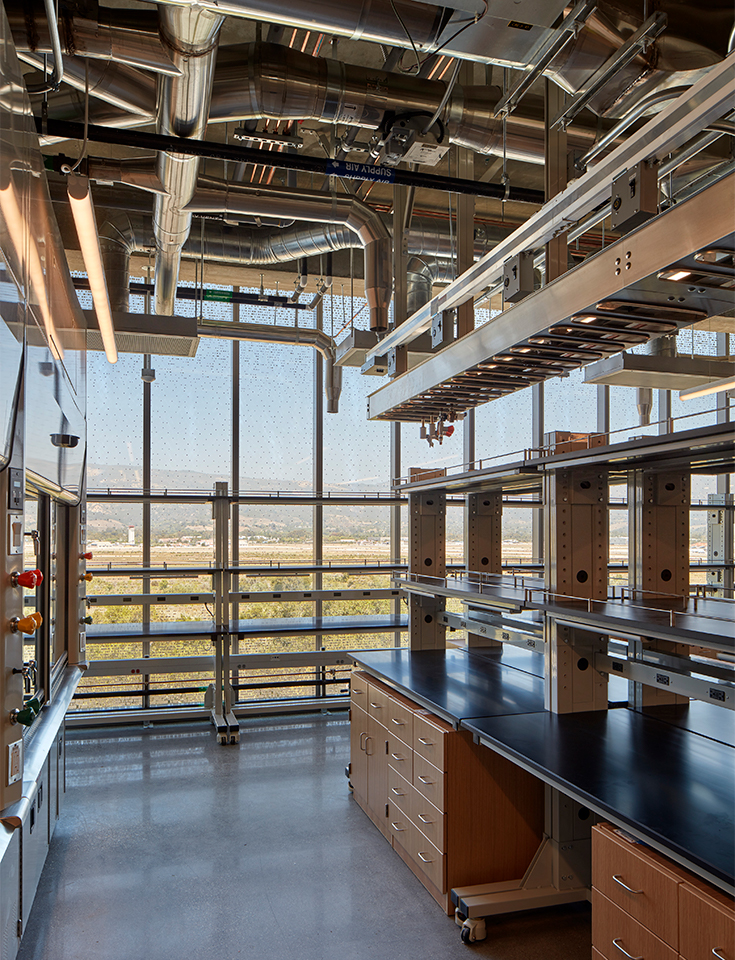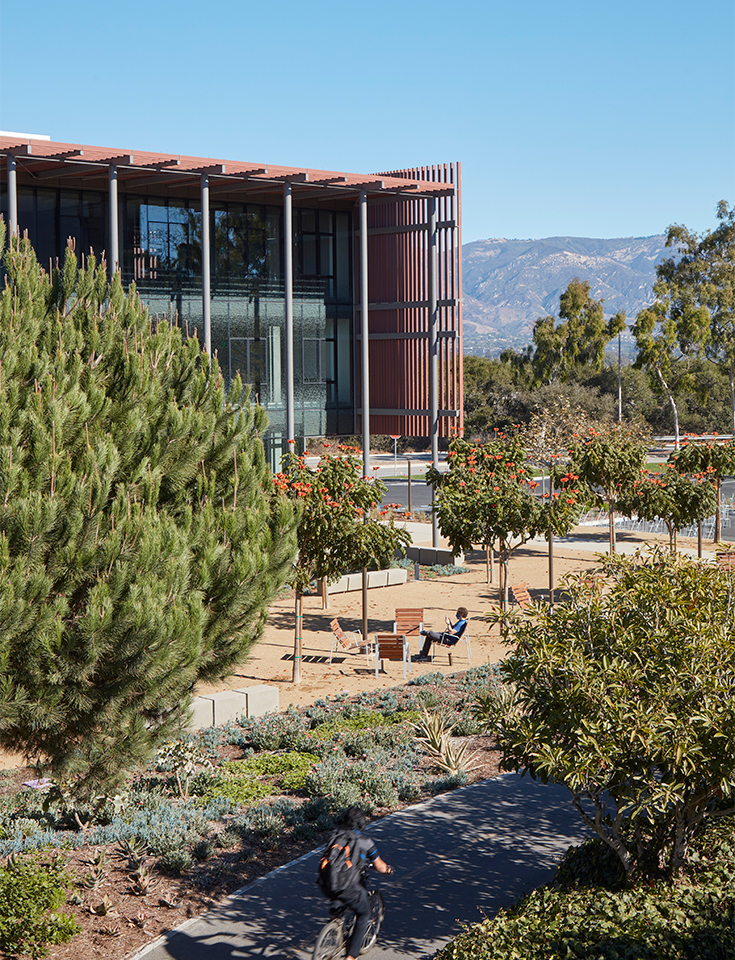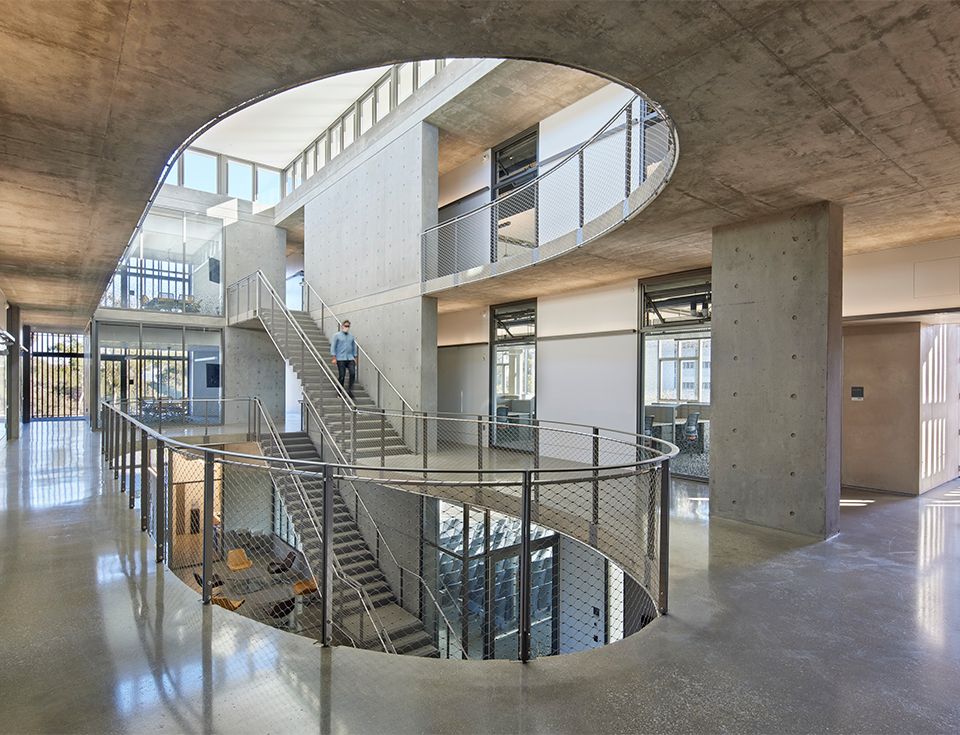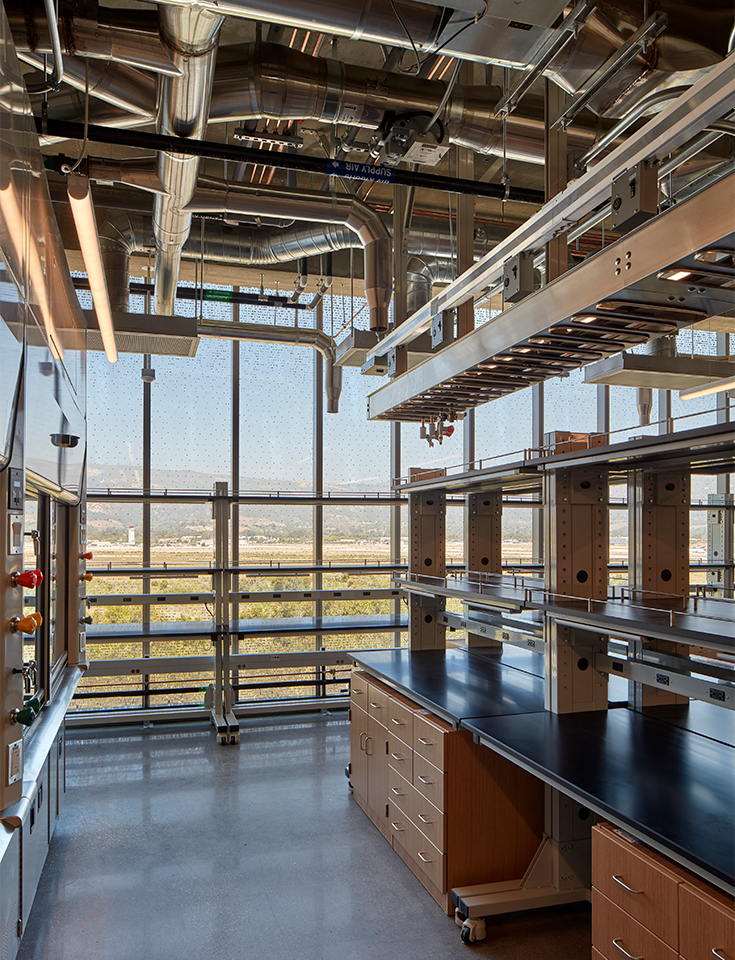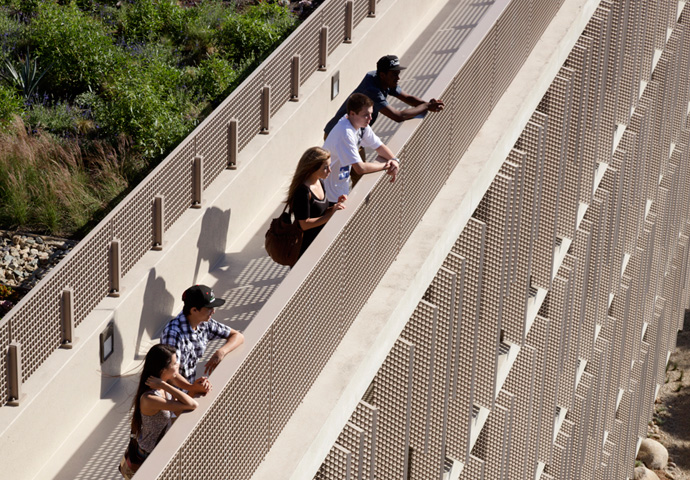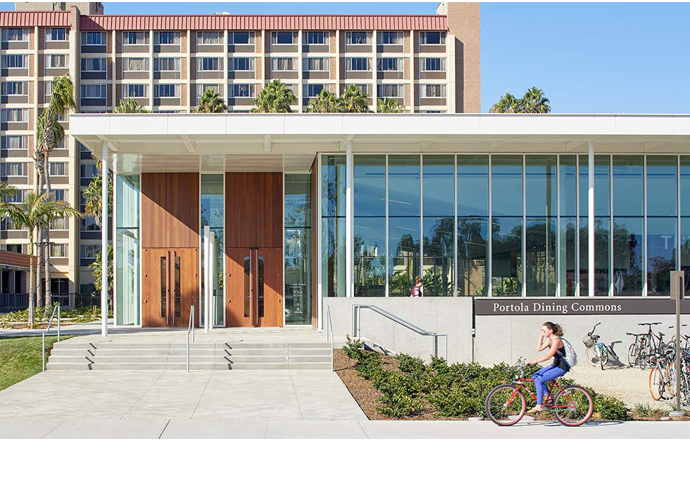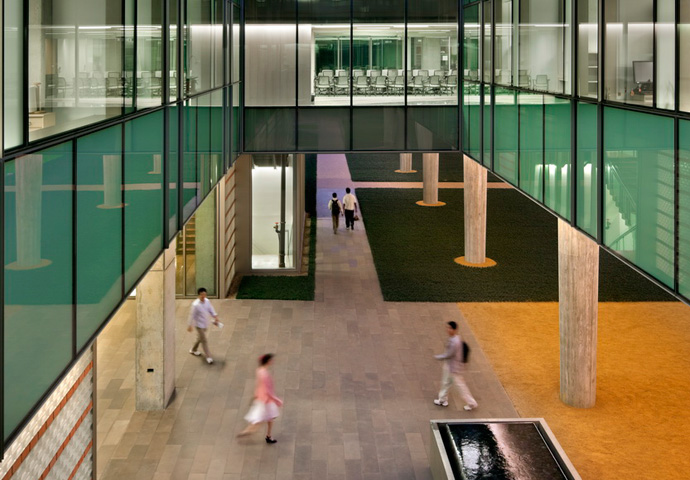The deep brise soleil and a bosque of African tulip trees identify the building on campus while managing the effects of the California sun. © Bruce Damonte
How can a laboratory open itself to a community, and to the air?
The Institute for Energy Efficiency drives significant advances in energy technology by focusing on research that changes the way people use energy, and the way scientists and technologists think about energy. The Institute of Energy Efficiency, in conjunction with the College of Engineering, commissioned KieranTimberlake to design a headquarters as forward-thinking as its mission, providing a new consolidated home for its groundbreaking research and the education and fundraising efforts that support it. The result, the new Henley Hall, is a state-of-the-art, LEED Platinum research and education facility, with offices and collaboration spaces anticipating emerging technologies and cutting-edge ideas.
Classrooms and collaboration spaces open to a three-story atrium in Henley Hall. © Bruce Damonte
IN CONCERT WITH NATURE
The 49,900 GSF building sits on a prominent campus thoroughfare and borders an environmentally sensitive habitat area. Its transparent facade maximizes fantastic views of this protected habitat and the Santa Ynez mountains beyond while allowing onlookers to view the research activity inside.
Well-oriented to campus, the new building co-locates Institute for Energy Efficiency faculty and student researchers in a state-of-the-art facility designed to advance science and adapt to evolving technologies. Henley Hall's labs anticipate changes in research methodologies, with flexible, open infrastructure that exposes utilities in anticipation of future upgrades to accommodate technological advancements.
Fronted by a terra cotta umbra and a grove of flowering trees that shade outdoor and indoor workspaces, Henley Hall builds on Santa Barbara's fabric of sandstone, low-rise massing, and rich materials in harmony with the landscape. The building's innovative ventilated facade protects the building from the sun's harsh glaze while encouraging natural airflow and passive cooling, dissolving the boundary between inside and out.
Labs enjoy stunning views of the Sierra Ynez mountains and a protected habitat. © Bruce Damonte
LABS WITH A VIEW
Laboratory spaces have high energy inputs to accommodate experimental conditions that are sensitive to temperature, light, humidity, vibration, and air quality. In order to balance the energy demand of laboratory spaces with spaces that have lower energy demands, the building mass is bifurcated along programmatic lines. This allows occupants to benefit from the pleasant, southern California climate, opening areas like offices, workspaces, and circulation to fresh air (and without need for mechanical cooling), without putting sensitive laboratory spaces at risk. The eastern wing is airy and bright, with operable windows in group offices, conference rooms, and breakout spaces oriented around a light-filled multi-story atrium that features an automated natural ventilation system. The western wing, containing laboratories, including sensitive optics and electronics labs, remains highly controlled, reducing the operational impact and cost of the building systems.
This split massing and passive approach to thermal control supports the building's LEED Platinum certification, and furthers the IEE's mission in support of a sustainable, low energy future.


